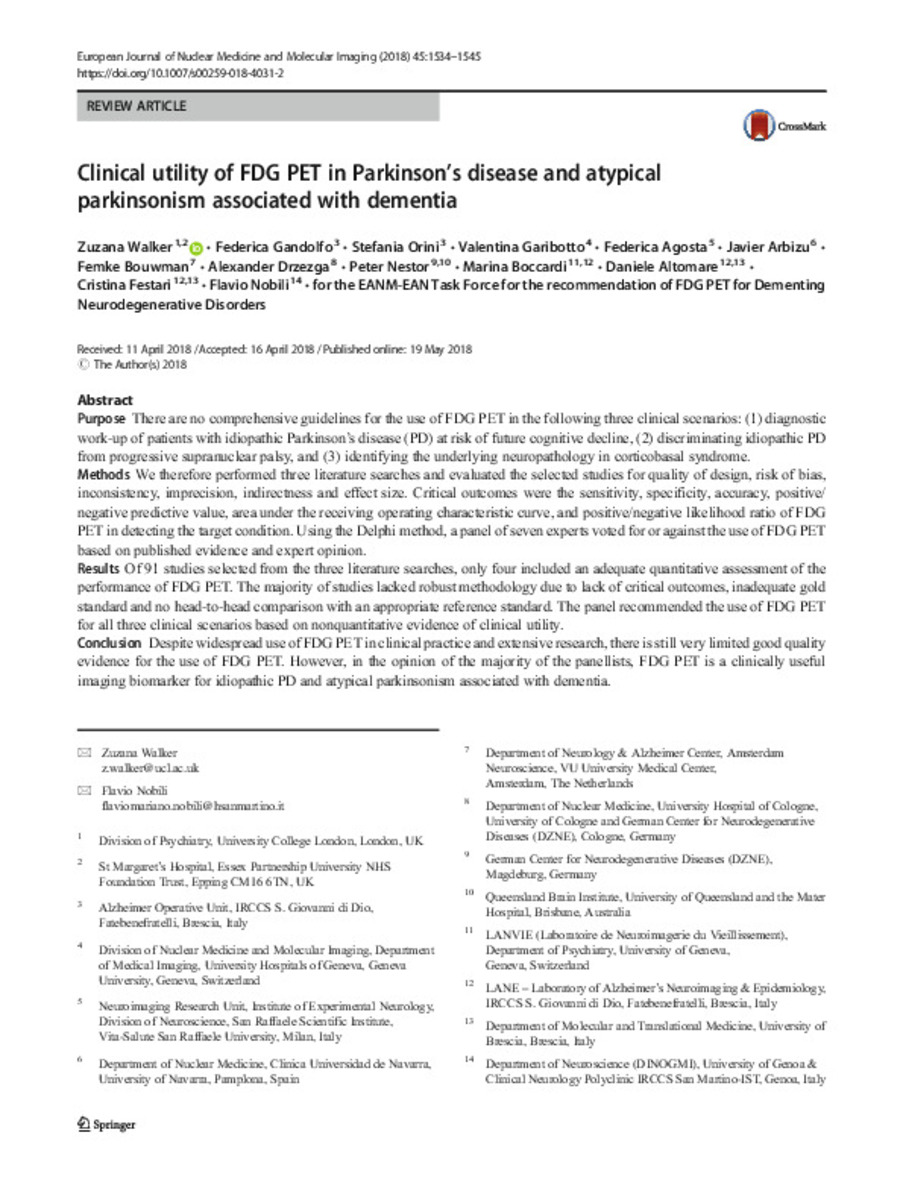Clinical utility of FDG PET in Parkinson's disease and atypical parkinsonism associated with dementia
Keywords:
FDG PET
Parkinson’s disease
Progressive supranuclear palsy
Prodromal PD
Corticobasal syndrome
Corticobasal degeneration
Publisher:
Springer Nature
Note:
This article is distributed under the terms of the Creative
Commons Attribution 4.0 International License (http://
creativecommons.org/licenses/by/4.0/), which permits unrestricted use,
distribution, and reproduction in any medium, provided you give appropriate credit to the original author(s) and the source, provide a link to the
Creative Commons license, and indicate if changes were made.
Citation:
Walker, Z. (Zuzana); Gandolfo, F. (Federica); Orini, S. (Stefania); et al. "Clinical utility of FDG PET in Parkinson's disease and atypical parkinsonism associated with dementia". European journal of nuclear medicine and molecular imaging. 45 (9), 2018, 1534 - 1545
Statistics and impact
0 citas en

Items in Dadun are protected by copyright, with all rights reserved, unless otherwise indicated.







